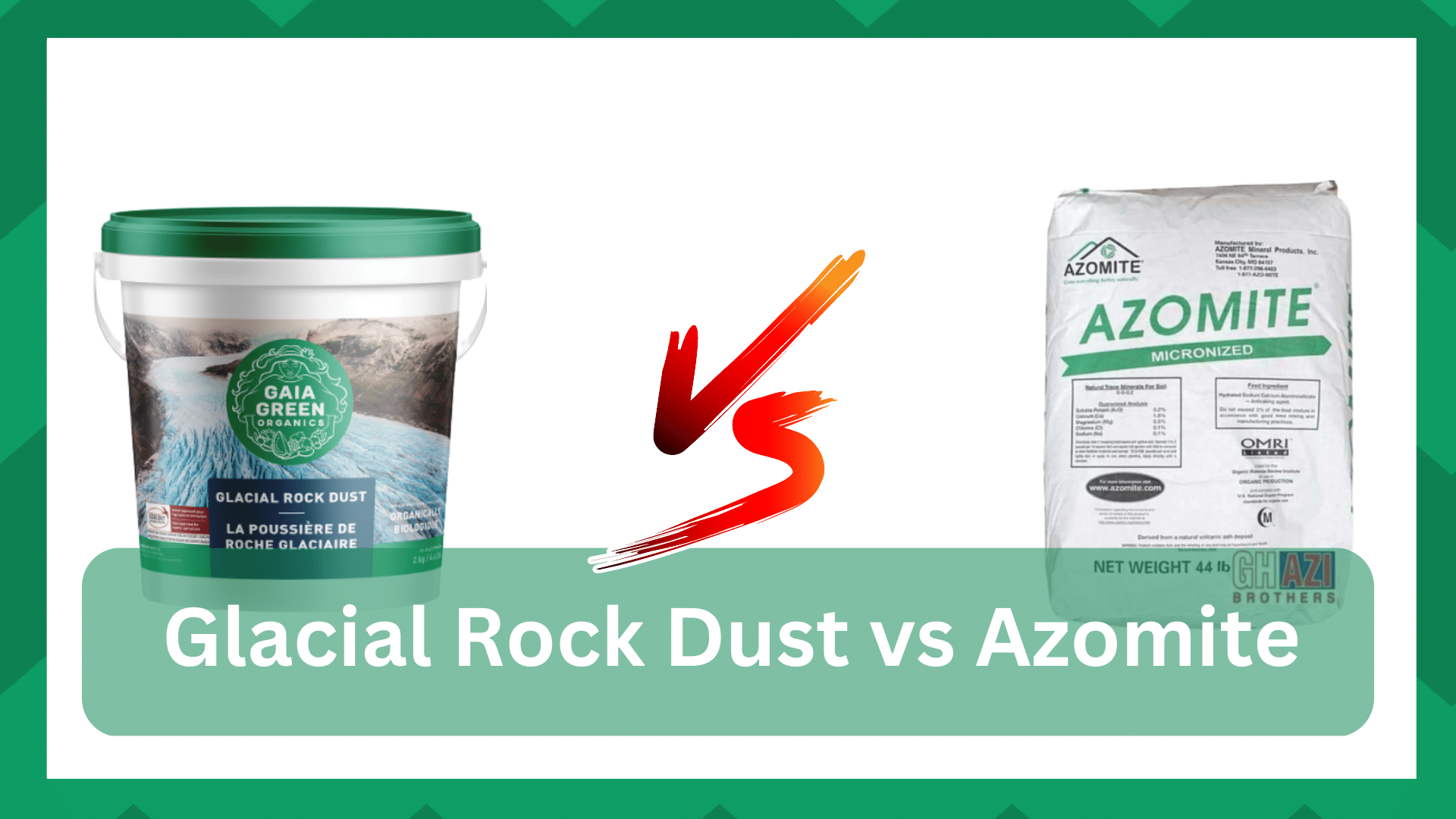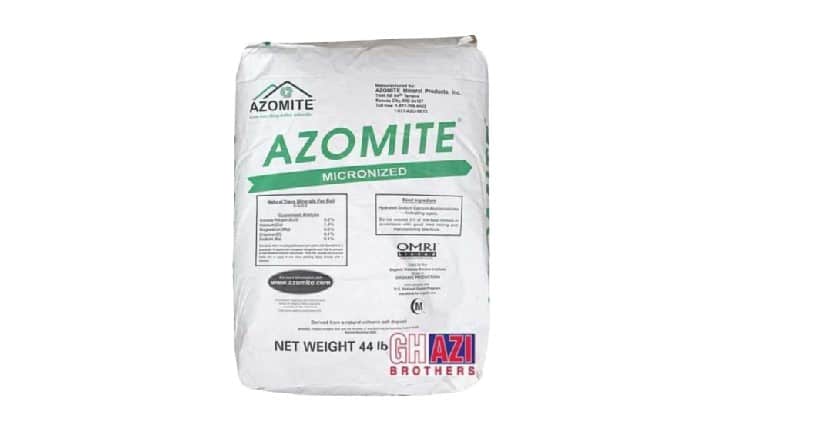
If you are a farmer who is fairly a beginner and is starting to get into rock dust, you might get overwhelmed with the number of options that you can choose from.
While rock dust is useful in particular for soils where there is a mineral deficit, they often come with various environmental impacts.
That being said, we have had a number of farmers compare glacial rock dust vs Azomite, as both seem to be an option which they can choose for their garden soil.
If you are also someone who is interested to learn more, then here are all the things that you need to know about both mineral products!
Glacial Rock Dust vs Azomite:
| Specifics | Glacial Rock Dust | Azomite |
| Origin | Glacial Moraines | Volcanic Ash |
| Intended Use | Soil Structure | Enhance Nutrient Content |
| Nutrient Quantity | Moderate | Extensive |
| Mixable | Yes | Yes |
Glacial rock dust and Azomite can both be considered great when it comes to improving your soil.
However, the intention behind the use of either one can help you out with the decision. The main thing that you gotta consider here is the solid requirement.
If you’re just looking to improve the consistency and the structure of the soil, then we suggest that you go with the Glacial rock dust.
You will get far more out of this mineral when compared with Azomite. So, if you believe that the micronutrients in the soil are enough, just rely on glacial rock dust.
On the other side of things, Azomite focuses entirely on increasing the nutrient content in the soil. You will get a huge amount of nutrition from Azomite, and won’t have to rely on any other alternatives when you’re dealing with depleted soil.
The use cases are entirely different and both can be phenomenal when you’re using them for their intended purpose. You can’t just add Azomite to the soil, expecting it to improve the structure and the consistency of the soil.
Similarly, you can’t just add glacial rock dust to the soil and think that it will address all the nutritional concerns. While the nutritional value offered by glacial rock dust is not minimal in any dimension, it simply can’t compete with Azomite.
All that you have to do here is to rely on the right type of mineral and you will avoid a ton of errors along the way. Hopefully, the hassle will be pretty limited when it comes to the use of Azomite and you will not have to hassle as much.
Everything boils down to how you’re planning on improving the soil structure as well as the nutritional content. The best thing here is that you can mix up both of these minerals to get the best out of both worlds.
Most of the time, 1:1 for both items is the best idea and you don’t have to rely on any other option.
However, if you’re not that sold on this ratio and want to use Azomite more than glacial rock dust or vice versa, then you can rely on 2:1 consistency.
Either way, you will have complete control over how you want to modify and improve the soil structure and won’t feel the need to rely on a single blend.
If you’re confused about how to source high quality Azomite or Glacial rock dust, just ask the local experts to help you out.
Just make sure to figure out the right type of mineral and you will be sorted out perfectly when it comes to the soil type.
Glacial Rock Dust
These minerals are made using a wide variety of minerals, most of which have been slowly lost. To put it simply, glacial rock dust is the kind of mineral product that is made using glacial action that took place over thousands of years.
The minerals present inside glacial rock dust seem to be beneficial for both humans and plants. On top of that, these minerals can also be transferred to our bodies through the food which is grown in these rich minerals.
As the rock dust is completely organic and contains lots of healthy nutrients which are all released over time onto the plant throughout the growing process, these encourage a healthy root system of any plant or trees on which they are grown.
Whether you decide to use these minerals as an added mineral to your fruits or to improve the overall quality of the soil is entirely up to you.
What Are the Benefits of Using Glacial Dust?
Apart from being completely safe to use, Glacial rock dust is also used because of the following benefits:
- These rock dust are non-toxic.
- They are environmentally friendly.
- The solution is completely soluble in water.
- These won’t burn your plants or seeds, regardless of how you decide to use them.
- Glacial rock dust also helps in improving the overall structure of the roots.
Azomite
Azomite is a fully natural mineral product that is mined from a unique deposit in Utah, USA.
These minerals are mined through the ash of ancient volcanoes in the vicinity. Using Azomite in the growth of your vegetables and fruits also helps in improving their flavors to a certain extent.
While these minerals are present in various forms, they are completely organic. Whether you are looking to improve the root systems of your plants, or want better yield, these minerals should help you achieve it.
Azomite is also known to be quite versatile as you can easily use the mineral in any kind of soil without any complication. On top of that, the product is fully OMRI-listed in being organic so it should be entirely safe to use the product.
Besides this, it is also believed that these rock dust have more than 70 different trace minerals. They are also readily available at garden centers.
What Are The Benefits Of Using Azomite?
While also being a good fertilizer, Azomite contains the following benefits:
These are best used on plants when you need bigger growth of fruits and vegetables.
- Azomite also helps in improving the overall flavor of your vegetables and fruits.
- They are known to provide better aid in the healthy root growth of the plant.
- The minerals are fully environment-friendly and organic.
What Really Differs Glacial Rock Dust From Azomite?
The only difference between the two mineral products is the micronutrients that both of them contain as well as what they are produced from.
Glacial rock dust is mined from glacial moraines in Canada and usually contains Magnesium, Calcium, Iron, Sodium, and Cobalt. On the other hand, Azomite is volcanic ash that is mined from Utah.
The Bottom Line
Comparing Glacial rock dust vs Azomite, these are all the key differences that you need to know about both of them in detail. As long as you’re sure about the soil requirements, you do not have to hassle at all with the type of mineral.
Everything boils down to how you’re willing to modify and improve the consistency and the nutrient content in the soil.
There is simply no need to over complicate the situation for yourself and you can rely on the Azomite for more nutrition and Glacial Rock Dust for more consistency.
Other than that, you will not have to hassle as much with the decision. If you’re still confused, then asking a local expert to help you out is not a bad idea. Just explain the situation of the soil to him and have him fix the problem for you.
If everything goes well, you will not have to worry about the plants dying out because of poor soil structure or mineral presence. Just don’t go overboard with the use of glacial rock dust or Azomite and you will be sorted out in no time.


